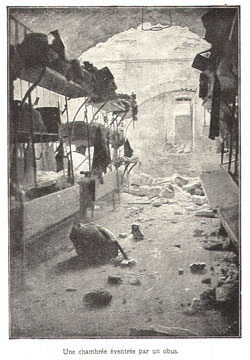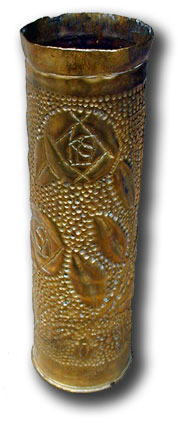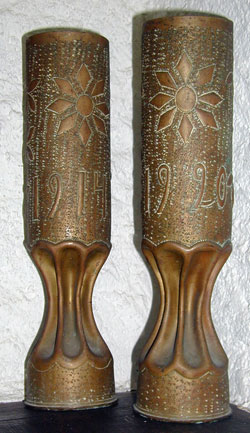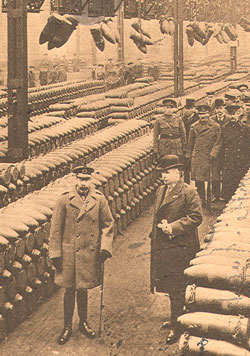|
Trench Art - WWI Shell Cases
Creating decorative objects from weapons of war as mementos or
souvenirs is a practice that is probably as old as warfare itself.
In recent years, this form of art has become highly collectible
and is frequently called "Trench Art" because of the marvelous
works created during WWI by soldiers passing long, fearful hours
in the dangerous trenches along the front lines.
Brass shells or artillery cases (French: obus) such as those
shown on these pages were a popular and plentiful base material
used soldiers -both during the WWI and afterwards -- to create vases
and othr objects. The Mementos often commemorate battles they fought
in, remember fallen comrades, or celebrate the end of war and the
arrival of peace. Many such pieces are done in a late art nouveau
style.

Admiring these beautiful examples of craftsmanship
today it is hard to remember that these were once devastating weapons
of war.
Below: Destruction wrought by an obus
Photo from the French magazine
"Illustration" January 9, 1915

 Trench
Art Vase Decorated with Roses Trench
Art Vase Decorated with Roses
Repoussé Brass
Repoussé - a method often used to create Trench Art vases
-- is a technique of creating a design in relief by hammering or
pushing the reverse side of a metal surface.
|






